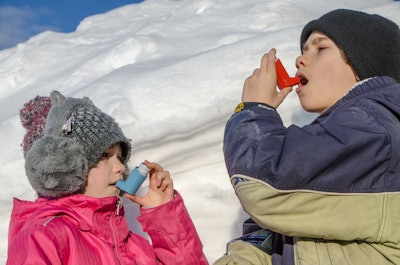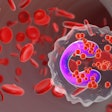
It’s not our imagination. Cold air really does trigger asthma symptoms in young children. In the study, “Nasal Oxidative Stress Mediating the Effects of Colder Temperature Exposure on Pediatric Asthma Symptoms,” researchers sought to explain the science behind the long-held theory that temperatures matter. The study was published in Pediatric Research.
New research led by Linchen He, PhD, MA, MEM, an assistant professor in the department of community and population health at Lehigh University College of Health in Bethlehem, Pennsylvania, leveraged the science of biomarkers to connect cold temperatures, oxidative stress and asthma flare-ups.
“Our results suggest that colder temperature exposure may increase oxidative stress in the nasal cavity, which in turn worsens asthma symptoms in children,” Dr. He said. “By establishing an understanding of this pathway and an associated biomarker, these results pave the way for future research on how to effectively devise personalized pediatric asthma management strategies.” Linchen He, PhD, MA, MEM
Linchen He, PhD, MA, MEM
Researchers studied nasal fluid, urine and saliva samples in 43 children with asthma, ages five to 13, over four visits, two weeks apart. At each visit, they measured the samples for malondialdehyde (MDA), a sensitive biomarker of oxidative stress.
Oxidative stress represents an imbalance between the body’s free radicals and antioxidants, which damages cells, proteins and DNA. When the body releases MDA, free radicals attack lipids in cell membranes. This causes the breakdown of membranes and MDA is shed into bodily fluids such as saliva, urine and nasal fluid.
Researchers cross-analyzed the data with the children’s asthma symptoms, using the Childhood Asthma Control Test (CACT). This test relies on symptoms reported by caregivers and the children and is a common tool for assessing a child’s asthma control.
Further, researchers analyzed data from outside temperatures ranging from the mid-40s to mid-60s. According to Dr. He, even a 3.6-degree drop in temperature was significantly associated with higher nasal MDA concentration — as much as 47% to 77%. Urinary MDA concentration increased by 6% to 14%.
Additionally, the study found that nasal MDA accounted for 14% to 57% of the associations between cold-induced asthma symptoms and worsened child-reported CACT scores. Researchers believe that higher oxidative stress in the nasal cavity triggers mucosal irritation in the lower airway, which leads to respiratory symptoms.
Study authors noted that the nasal cavity is also the primary point of entry for exposure to air pollutants. According to their previous research, higher air pollutant exposure was also associated with higher nasal MDA levels. Their results suggest that nasal MDA is a powerful biomarker to tracking asthma triggers.
Dr. He noted, however, that the results of the current study were limited based on sample size, unmeasured environmental exposures (e.g., aeroallergens) and limited variation in temperature exposure during the study period.
“Further research is recommended to confirm these findings and explore potential mechanisms underlying the association between temperature exposure, oxidative stress and asthma exacerbation,” he said.























